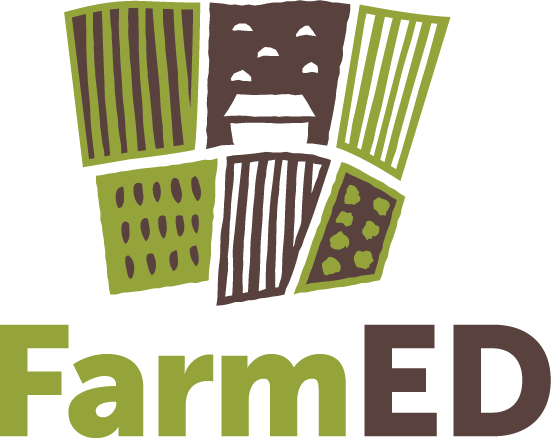Young Writers Prize 2024
Jul 02, 2024

Introducing the winner of the FarmED Chelsea Green Young Writers Prize, announced at the Farm & Food Literature Festival earlier this summer - is grower Jack Peppiatt from Birch Farm, who is exploring alternatives to conventional agriculture.
The prize, in its second year, is open to writers aged 16-30, who have something important to say about sustainable food, regenerative agriculture, biodiversity and climate change. We asked entrants to write up to 1500 words about any subject across the spectrum of ecological food, farming and the environment and looked for powerful, inspiring articles, pieces of fiction, journals, blogs or opinion pieces. The judges of the 2024 award were award-winning nature writers Nicola Chester and Dominic Couzens, Muna Reyal (Head of Editorial, Chelsea Green Publishing UK) and storyteller Fiona Mountain from FarmED. They all agreed that Jack's writing about vegetable varieties was the standout piece of writing, in terms of quality of writing, knowledge of natural history, originality of subject and ability to engage readers.
Jack has won £500 worth of books from Chelsea Green, plus a one-to-one editorial session with Muna Reyal.
Give Jack a follow @jack_peppiatt.
Find Jack's brilliant piece of work below, we hope you enjoy.
I have been thinking a lot about vegetables recently. Little surprise, perhaps, since I grow vegetables as a means of making my living. Specifically, I have been thinking on the distressing statistic that we have lost an estimated 90% of our vegetable varieties over the last century. Much has been said elsewhere of the impact of this tragedy on our agricultural diversity, and the consequent resilience (or lack thereof) of our food systems in the face of impending climatic change. This is troubling indeed. There is, though, another dimension to this loss that weighs on me—as a saver and sower of seed.
Varieties of vegetables are not just mere accidents. Although, of course, many of them do arise through human collaboration with the randomised processes of genetic mutation, breeding a new variety typically takes between 7-10 years of consistent attention and selection—from sowing to selecting for seedling vigour to potting on to planting out to isolating or hand-pollinating to rogueing to threshing to winnowing to storing and so to sowing again—all of which is to gloss over the manifold complex tasks associated with managing soil fertility, planning and establishing beds, and maintaining plant health over the course of multiple years—before a stable and identifiable variety is established. The care and, dare I say it, love required to see such a process through is remarkable.
Selected for taste, nutritional quality, adaptation to local conditions, resistance to disease and pests, storage characteristics, and sometimes purely for the delight of growing and eating something beautiful and unique, vegetable varieties are vehicles for communicating the joy our ancestors partook of in their food—their care for the land that sustained them—the subtle, intricate knowledge they had of their locale and ecosystem—the ways in which their work was woven into their lives and their understanding of themselves as intimately involved in the dynamic and unfolding processes of the natural world in which they participated and lived. All of this is communicated in the inheritance of a single vegetable variety.
There is a real sense, then, in which our vegetable varieties both reflect and communicate the kind of unsystematised, unthematised knowledge that is the precondition for all meaningful intimacy; of course, it is possible to describe in precise and highly systematic botanical language the concepts necessary for the breeding and preservation of a vegetable variety, but what cannot be thus articulated is the kind of intimate, sensuous knowledge necessary to select for taste, and for texture, and for beauty. What’s more, this inheritance comes to us not as some sterile, static heirloom to be admired; it invites us to become part of a living tradition—to grow and save seed ourselves and thereby imbricate ourselves into an unbroken lineage of human stewardship—to partake in the care and synergistic processes that are necessary to grow good, healthful food—and to attune ourselves to the phenological subtleties of our little patch of earth.
To breed or steward a variety is to enter into an open-ended collaboration with the more-than-human––to take up an invitation to be a part of the mystery that is the living, breathing world, and so to take our place—as gardeners. As such—and certainly when measured purely in terms of cumulative human care and attention—the wealth of vegetable varieties bequeathed to us by our ancestors must rank amongst the great cultural inheritances of humankind. This is to say nothing of the cultural richness of the processes historically associated with saving seed. That these have typically taken the form of communal, culturally embedded traditions is itself an example of the collaborative forces harnessed by agriculture at its best and most ecologically integrated.
1 This statistic is taken from an analysis of the decline in commercially available vegetable varieties in the US between 1903-1983 from a representative sample of 10 different vegetables; I assume the UK to have followed a broadly similar trend. The infographic is reproduced here: https://www.fastcompany.com/1669753/infographic-in-80-years-we-lost-93-of-variety-in-our-food-seeds. Separately, the FAO estimates that we have lost 75% of global crop diversity in its report here: https://www.fao.org/3/y5609e/y5609e02.htm
Recent news items




